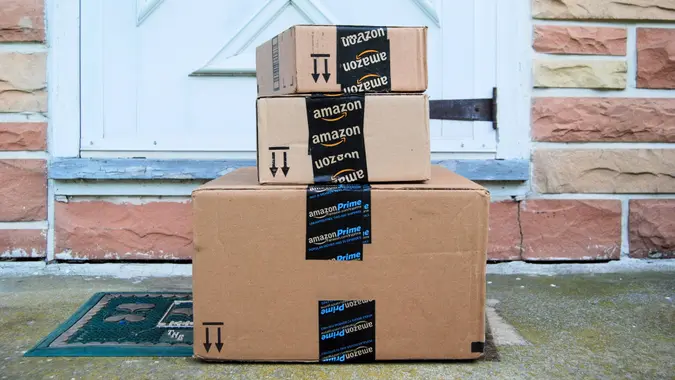The 7 Shopping Strategies That Cut Your Bills in Half

Commitment to Our Readers
GOBankingRates' editorial team is committed to bringing you unbiased reviews and information. We use data-driven methodologies to evaluate financial products and services - our reviews and ratings are not influenced by advertisers. You can read more about our editorial guidelines and our products and services review methodology.

20 Years
Helping You Live Richer

Reviewed
by Experts

Trusted by
Millions of Readers
Your monthly bills don’t have to stay the same forever. With the right shopping strategies, you can cut many expenses by 25% to 50% without sacrificing quality or convenience. The key is knowing when and how to negotiate, where to find better deals and which tactics actually work.
Here are seven proven strategies that can slash your bills starting this month.
Strategy 1: Use Annual Bill Negotiation
Call your service providers once a year and ask for better rates. This works especially well for internet, phone, cable and insurance companies.
Customer retention departments have authority to offer discounts that aren’t available to new customer service representatives. The key is asking to speak to the “retention” or “cancellation” department rather than general customer service.
Start by researching competitor prices before calling. When you know what other companies charge, you have leverage to negotiate better rates.
Strategy 2: Bundle Strategically, Not Automatically
Companies push bundles because they’re profitable, but bundling only saves money when you actually use all the services included.
Review what you actually need before accepting bundle offers. Sometimes buying internet and phone separately costs less than a triple-play bundle with cable TV you never watch.
Strategy 3: Time Your Major Purchases
Retailers follow predictable sale cycles that can save you 30% to 70% on major purchases if you time them right.
Appliances go on sale during three key periods: Memorial Day weekend, Labor Day weekend and Black Friday weekend.
Cars offer the biggest discounts at month-end and year-end when dealers need to hit sales targets. The best deals typically happen in October, November and December as dealers clear inventory for new model years.
Strategy 4: Use Price Matching and Protection
Major retailers like Best Buy, Home Depot, Target and Walmart offer price-matching policies that let you get the lowest advertised price without shopping around.
Many credit cards also provide price protection, automatically refunding the difference if you find a lower price within 60 to 120 days of purchase.
This strategy works best for electronics, tools and home goods where prices vary significantly between retailers.
Strategy 5: Master the Return and Exchange Window
Liberal return policies can save money when used strategically. Buy items you might need during sale periods, then return what you don’t use within the return window.
Costco’s unlimited return policy on most items means you can stock up during sales without risk. Amazon’s 30-day return window lets you buy potential gifts early during sales and return unused items.
This approach requires discipline and organization to track purchase dates and return deadlines, but it can save significant money on seasonal items and gifts.
Strategy 6: Leverage Cash Back and Rewards Systematically
Credit card rewards and cash-back apps can reduce your effective spending by 2% to 10% when used consistently.
Use cash-back credit cards for categories where you spend the most money. Stack credit card rewards with retailer loyalty programs and cash-back apps like Rakuten for compound savings. This layered approach can reduce costs by 5% to 15% on regular purchases.
Strategy 7: Buy Generic for Hidden Savings
Store brands typically cost less than name brands while meeting identical quality standards.
Many store-brand products are manufactured by the same companies that make name-brand versions. Kirkland Signature products at Costco, for example, are often made by major national brands but sold at big discounts.
Focus on switching brands for items where quality differences are minimal: pain relievers, vitamins, cleaning products, basic clothing and paper goods.
Start With Your Biggest Bills
Now that you have some ideas for where to cut, how should you start? Well, that’s easy. Begin with expenses that have the highest potential savings. Your mortgage or rent payment might not be negotiable, but your phone, internet, insurance and subscription services probably are.
Focus on bills over $50 monthly since these offer the most significant dollar savings. A 20% reduction on a $200 monthly bill saves more than a 50% reduction on a $20 bill.
The strategies that require the least effort (like using cash-back apps and price matching) can be put into action immediately. More involved tactics (like annual bill negotiation) can be scheduled throughout the year.
Most people accept their bills as fixed costs, but almost everything is negotiable if you know how to ask and when to shop around.
More From GOBankingRates
 Written by
Written by  Edited by
Edited by 

























